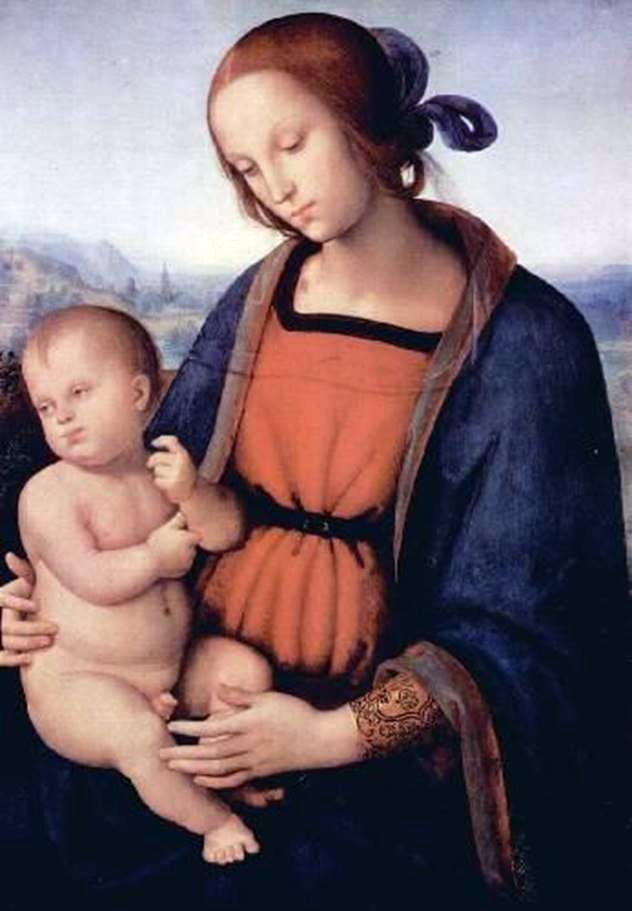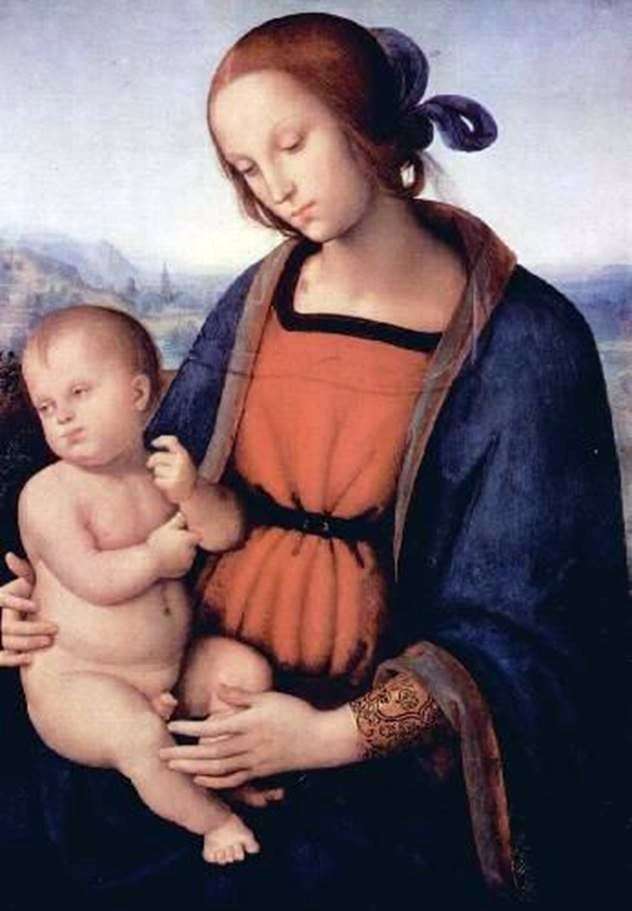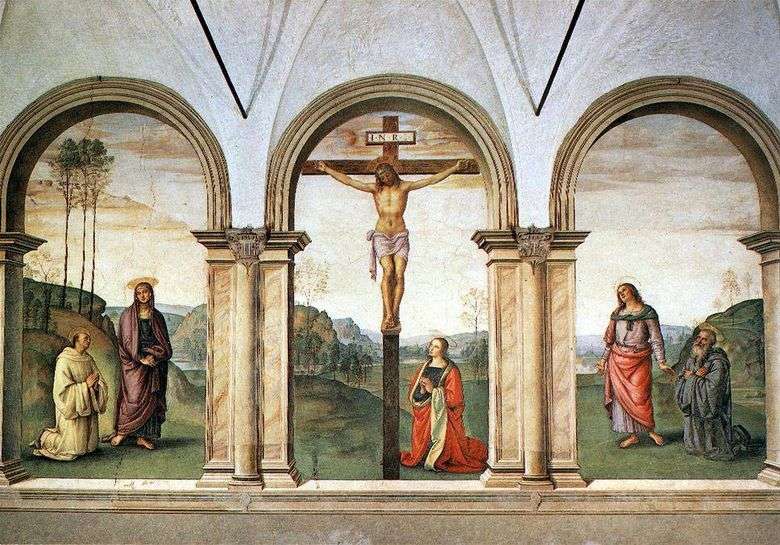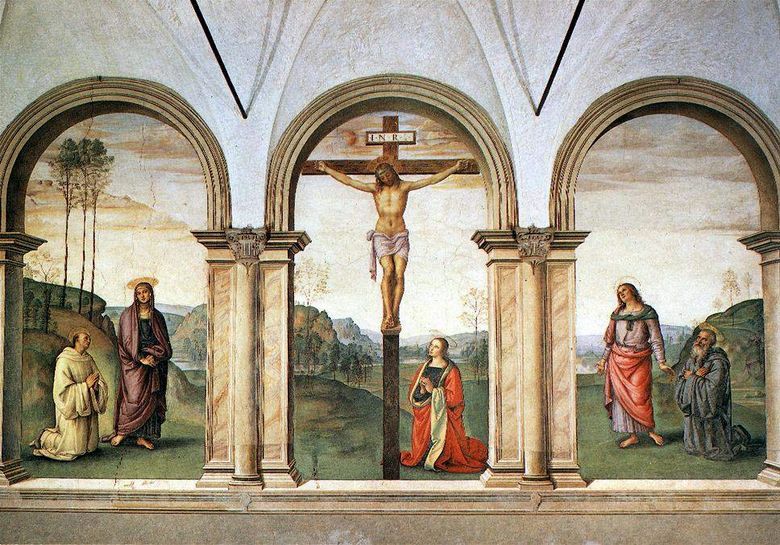
Working a lot and, apparently, very quickly, Perugino, in addition to numerous fresco cycles, created many large altar compositions and wrote a number of small easel works.
One of his favorite themes was Madonna and Child. In these small compositions, the harmonic basis of his talent and features of style based on the generalized interpretation of smoothly round masses and silhouettes, foreshadowing the style of High Renaissance, are especially fully revealed. At the same time, Perugino develops a certain stereotype of the appearance and state of mind of his meek heroines.
No wonder his contemporaries reproached him for the fact that all his characters had the same facial expression. On this basis, a quarrel between Perugino and Michelangelo, described by his contemporaries, ended in legal proceedings. From the beginning of the 16th century, Perugino was pushed into the background of the master of the High Renaissance, although he continued to work in the province until his death.
 Vierge à l’enfant – Pietro di Cristoforo Vanucci Perugino
Vierge à l’enfant – Pietro di Cristoforo Vanucci Perugino Apollo and Marsyas by Pietro Perugino
Apollo and Marsyas by Pietro Perugino Fresco triptych Crucifixion by Pietro di Cristoforo-Vanucci Perugino
Fresco triptych Crucifixion by Pietro di Cristoforo-Vanucci Perugino Madonna y el niño – Pietro di Cristoforo-Vanucci Perugino
Madonna y el niño – Pietro di Cristoforo-Vanucci Perugino Tríptico de Fresco Crucifixión – Pietro di Cristoforo-Vanucci Perugino
Tríptico de Fresco Crucifixión – Pietro di Cristoforo-Vanucci Perugino Madonna, Child and Angel by Pietro di Christophoro-Vanucci Perugino
Madonna, Child and Angel by Pietro di Christophoro-Vanucci Perugino Triptyque mural Crucifix – Pietro di Cristoforo-Vanucci Perugino
Triptyque mural Crucifix – Pietro di Cristoforo-Vanucci Perugino Archangel Michael by Pietro di Cristoforo-Vanucci Perugino
Archangel Michael by Pietro di Cristoforo-Vanucci Perugino